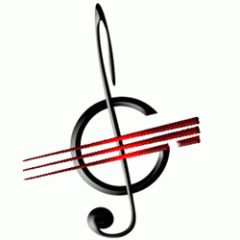You’ve probably been in this situation yourself: you are playing through one of your favourite pieces and getting along quite all right with the chord symbols until you come across a symbol includes the “sus”. For example: Csus4. What does this “sus” mean? Does it have anything to do with a sustain pedal?
Well no, it has nothing to do with a sustain pedal, but is simply short for “suspended”. So what has been suspended?
The 3rd of the chord (in the case of a C major chord the note E). Let me explain.
Take a bog standard C major chord:

Take away, or “suspend” the 3rd:

Now you add in a 4th instead, and you get a Csus4:

So the 3rd of the chord has been suspended and been replaced by the 4th note of the scale, in this case the F.
You could also suspend the 3rd and use the 2nd instead, so a Csus2:

Also quite common is using both a 2nd and a 4th in a chord at the same time:

You will also find that a minor 7th has been added, creating a C7sus4:

You could also add the 2nd instead of the 4th:

Or indeed both the 2nd and the 4th, which makes for a slightly messy looking chord:

The important thing to remember is that if you come across a chord symbol that symbol reads Csus that a Csus4 is implied as Csus is short for Csus4. By the same token, if you come across C7sus, indeed this is short for C7sus4. So:
Csus = Csus4
C7sus = C7sus4
Addendum:
Sus chords are very common in popular music and jazz due to their softer sound compared to straight major or minor chords, and the fact that you can make up a nice chord progression simply by creating a random progression of sus chords if you omit the 5th of the chord (more on that in the next posting). In classical music sus chords are often used in front of a dominant chord before a perfect cadence, i.e. Gsus G C.
Lincoln Jaeger


